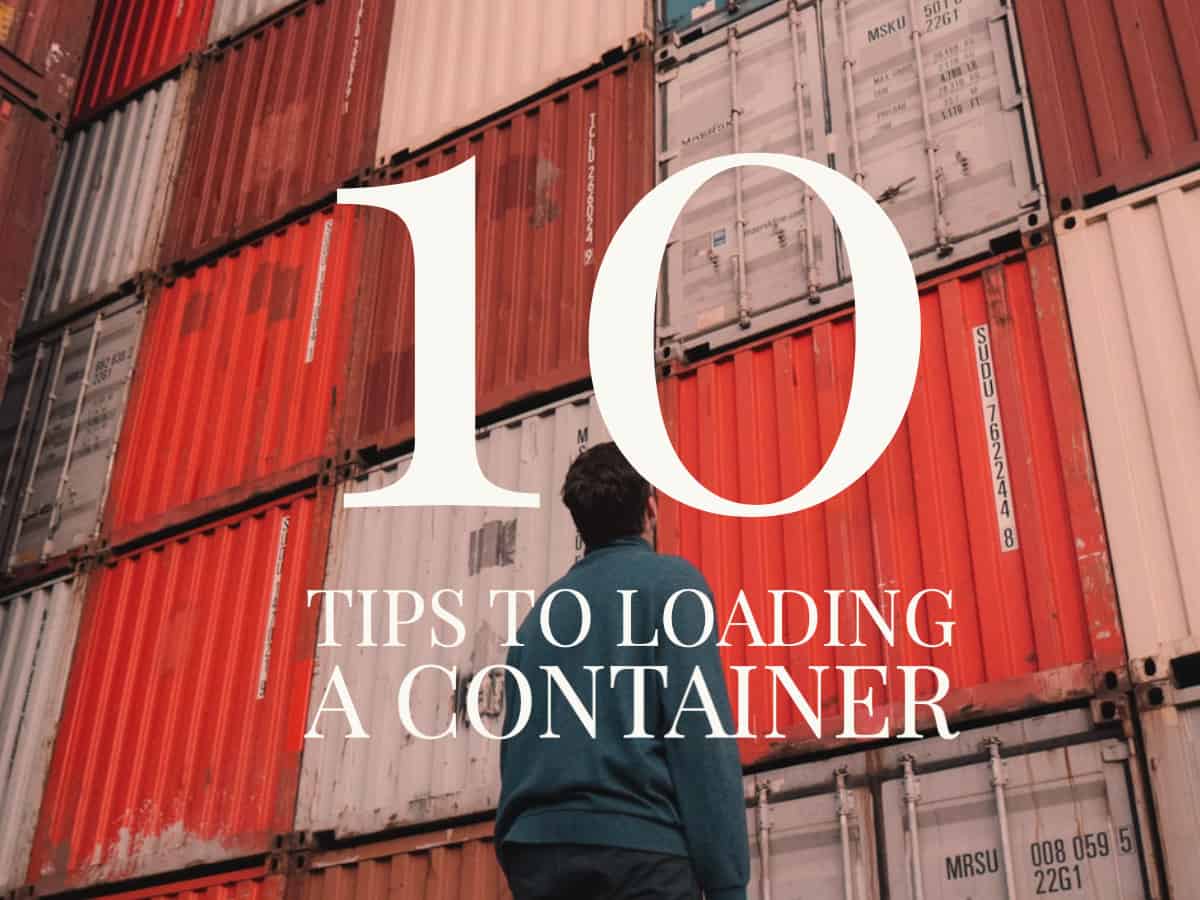Knowing how to load a dry shipping container properly is very important for anyone looking to ship goods. To ensure your goods arrive safely, it must be loaded properly.
A dry shipping container is a container that is used for 90% of all worldwide shipments. The dry shipping containers’ standard sizes are 20’, 40’, and 40’ HC container sizes. Each size has different payload weights and loading size limits, so when you prepare to load your container, what container size you choose will make a huge difference in the actual container loading.
Table of Contents
- What Is A Dry Shipping Container?
- Before Loading Properly, Check Your Dry Shipping Container
- Check Your Load Calculations Before Actually Loading
- Understand Your Container Loading Capacity
- Understand If Any Cartons Have Special Loading Requirements
- The Critical Importance Of Understanding Shipping Containers And Proper Loading – 10 Reasons
- 1. Maximizing Cargo Capacity:
- 2. Cost Efficiency:
- 3. Safety During Transit:
- 4. Legal Compliance:
- 5. Reduced Environmental Impact:
- 6. Streamlined Customs Processes:
- 7. Faster Turnaround Times:
- 8. Improved Supply Chain Management:
- 9. Minimized Liability Risks:
- 10. Competitive Advantage:
- Listen To Our Podcast About Cargo Chronicles: Mastering the Art of Loading Dry Shipping Containers Below or By clicking here.
- Related Questions
Learning how to load a dry container properly can take a bit of time and is a skill. But, if you follow our rules and understand some basic information about dry shipping containers, it will make the loading easier for you.
What Is A Dry Shipping Container?
A dry container is the most used shipping container of all containers and is used to ship mainly dry goods around the world. 90% of all goods shipped in the world use a dry container. As the name implies this means you are going to be putting dry cargo in it and it does not have refrigeration or any other features. This container is not watertight.
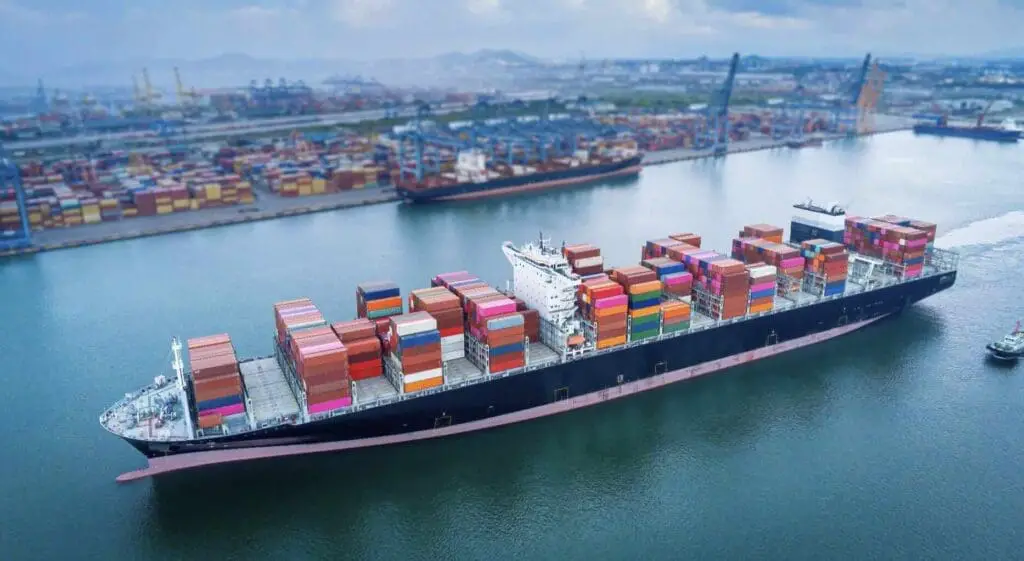
Dry containers are made from aluminum and steel and are suitable for all cargo types. There can be slight differences in the payload (weight loading) and loading between a steel or aluminum. Most shipping companies will not give you a choice on what kind of container you can get but will give you the container you have empty in their shipping yard.
Before Loading Properly, Check Your Dry Shipping Container
Before you even start to load your dry shipping container, there are a few basic checks you should do. This is important since if you do not do these checks, you may find the goods arrive at their destination damaged.
A few things to check before you load your container:
- Check for container holes and damage– There can be holes or damage on the container, and sometimes we have had to try to fill these holes or return the container. The best way to do this is to get in the container and have someone close the door so you can see if any light is coming through where it is not supposed to.
- Check the container door closes properly – It is very important that your door closes correctly. You do not want the goods to fall all over the road before your goods even get to the port.
- Check the container is seaworthy – The container has to be able to make it to its destination, so you need to check that the container is seaworthy and in good enough condition. We have received some containers in such bad shape that we refused them and told them to return them and bring a new one.
We have had products arrive at their destination wet because the container had holes in it or it was not seaworthy. If you do some of these basic checks before you actually load the container it can save you a lot of headaches once the goods arrive damaged due to the poor dry shipping container quality.
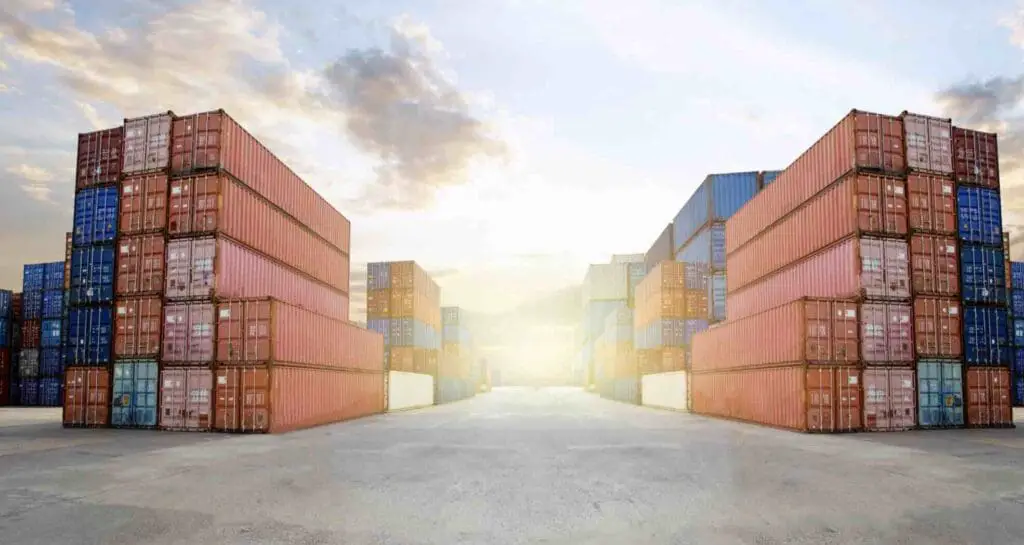
Know The Size Of Your Dry Shipping Container
You need to understand the size of your dry container is to know what amount of goods can actually be loaded into the container. No matter how much stuff you have to load into a container, you can only get as much in as will actually fit into your container
You will notice when looking at our list below that the containers all pretty much have the same width of 8’ or 2,438 mm. The width does not change in a container. So if you have something that is wider than this or bigger than this, you will have a problem unless you put it in sideways.
The height of standard 20’ and 40’ dry shipping containers are the same at 8’6” tall. Again, you need to look at this and also the door opening to know what will be able to be loaded in. For most shipments, this is not a problem. The main issue is if you are shipping something very large.
The 40’ HC container is called a 40’ HC or 40’ High Cube container as it is higher than the standard 20’ container or 40’ container. This container will give you an extra foot at the top of the container (8’ 6” compared to 9’ 6”).
| 20′ | 40′ | 40’HC | ||||
| Dimensions | Millimeter | Feet | Millimeter | Feet | Millimeter | Feet |
| External | L 6,058 x W 2438 X H 2,591 | L 20′ x 8′ X 8’6″ | L 12,192 X w 2,438 X H 2,591 | L 40′ x W 8′ X H 8’6″ | L 12,192 X w 2,438 X H 2,896 | L 40′ x W 8′ X H 9’6″ |
| Internal | L 5,898 X W 2,352 X H 2, 591 | L 19’4.2″ x7’8.6″ x7′ 10″ | L 12,032 X W 2,352 X H 2,591 | L 39′ 5.21/32″ x7” 19/32″ x7′ 10.7/32″ | L 12,032 X W 2,352 X H 2,591 | L 39′ 5.21/32″ x7” 19/32″ x 8′ 10.7/32″ |
| Door Opening | W 2,340 X H 2,280 | W 7’8″ x 7′ 5.8″ | W 2,340 X H 2,280 | W 7’8 1/4″ x 7′ 5 49/64″W | W 2,340 X H 2,585 | W 7’8 1/8″ x 8′ 5.49/64″ |
Know the Payload Weight Limit Of Your Dry Container.
All the container sizes have weight limits. If you are shipping very heavy items such as ceramic tiles, stones, or cement, the weight limit may be more important for your loading than the container size.
This is because of the weight limit that each container size has for the container. This is also why, for some very heavy items, the container may be almost empty, but nothing else can be put in the container due to the container weight or payload limits.
Below in this chart, we show the payload weight capacity for a 20’ and 40’ container. The payload means the weight of the goods you actually put into the container.
| 20′ | 40′ | |||
| Weight | Kilograms | Pounds | Kilograms | Pounds |
| Maximum Payload Weight | 25,000 | 55,126 | 27,600 | 61,200 |
If you are shipping something that is very heavy, you may want to check with your shipping company to see if they have any other weight restrictions or requirements.
Check Your Load Calculations Before Actually Loading
Check the sizes and loading capacity of what you are actually going to load into the dry shipping container. This may seem like common sense, but many people do not do this and think they will figure it out when loading the container. I cannot stress this enough – you must check the loading capacity before loading a container.
You Can Do This By Knowing The Following Calculations:
Check The Carton Size
You need to measure each side of the carton to get the carton area size. This can be done by measuring the length x width x height of the carton to get the overall carton size. The math formula to figure out the CBM of each carton in either inches or cm is below:
- Carton sizes In inches – (L x W x H) x 0.0000163 For example (20’ x 17” x 7”) = 2,380. Then multiply the 2,380 x 0.0000163 = 0.038 CBM per carton.
- Carton sizes in CM – (L x W x H) / 1,000,000 For example, 40 cm x 50 cm x 35 cm = 70,000. You will then divide the 70,0000 by 1,000,000 or 0.07 CBM per carton for this size.
Once you have the carton sizes you can add up all the cartons to see the total CBM for your shipment. We work with CBM as we find it is much easier to work with Cubic feet.
Check Carton’s Gross Weight
Check the gross weight of each carton. This should be the product, including any packing materials and the carton itself. You can then add up all the cartons and their weights to get the gross payload shipping weight. This is the easiest way to see if your dry shipping container will be overweight.
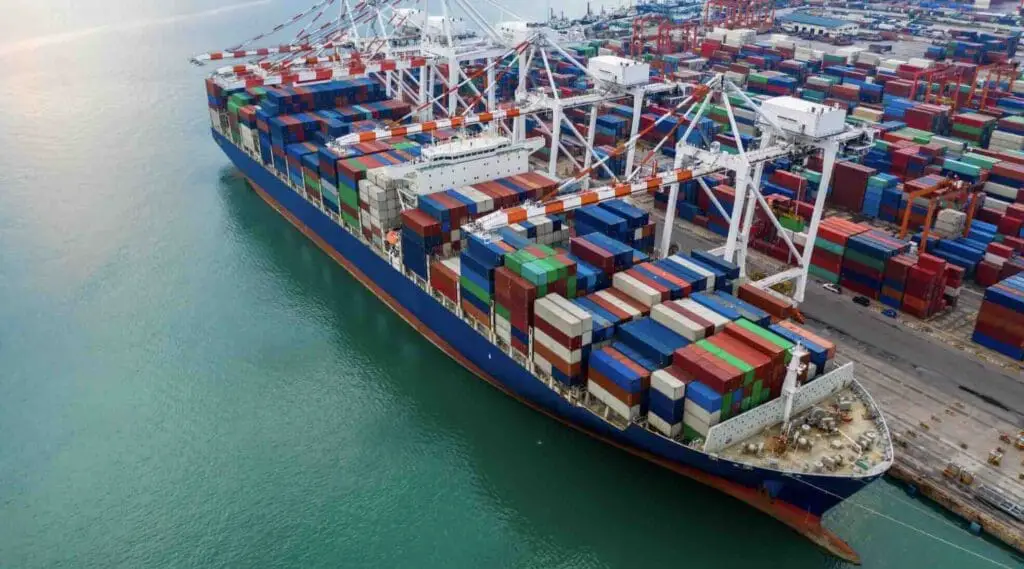
Understand Your Container Loading Capacity
Not all dry shipping containers will load the same amount of goods. So you must understand the container loading capacity for each container size.
Here is the loading capacity in cubic meters and cubic feet for each of the different dry shipping containers.
| 20′ | 40′ | 40′ HQ | ||||
| Internal Capacity | Cubic Meters | Cubic Feet | Cubic Meters | Cubic Feet | Cubic Meters | Cubic Feet |
| Loading Capacity | 33.2 | 1,171 | 67.8 | 2,394 | 76.4 | 2,700 |
When shipping a lot of items in a container, especially if some of the items are quite large, you need to account for some extra space in the container for the loading. This really is very tough to know as even a few cm difference in a container size or carton can make a difference in how much you can actually load.
Following some of the rules we have given below on loading a container can help with your dry shipping container loading capacity.
Understand If Any Cartons Have Special Loading Requirements
When loading a container the first thing you need to understand is if there are some goods that have specific loading requirements. Here are some of the special loading requirements:
- This end up – If a carton has a “this end up” on it then you really cannot lay it on its side without causing damage to the goods inside the carton. Those cartons should be loaded with the “this end up” loading in the correct position.
- Handle with care / Fragile – if there is a very fragile item you may have to consider where and how you load it. Maybe it cannot be loaded on the bottom but must only be loaded on top. This can also affect how you load the container.
Put Cartons Out In Order Of Loading
In our warehouse, we will put the products out in the order we will be loading them in the container. We have found that doing it this way makes the container loading much easier.
Usually, when you are loading a container, the truck driver who drove the container to you is waiting for the container, and they will only wait for so much time. So, you have to be organized in how you load the container.
There will usually always be a time limit on how much time the driver is willing to wait. As a general rule, our trucking company allows us 4 hours to load a container. If we go over those 4 hours, we must pay extra for the driver’s time.
Before you load a container, you should check out how much time you have to load the container. All shipping and trucking companies expect you to do this in a reasonable time frame.
Load Container From Back To Front
Load the container working from the back of the container to the front of the container, and do not try to work side to side. If the container will have any space, it is best to have that space at the front door so that you can secure the goods in the container.
When loading a container, you want the goods to be secure and to move as little as possible. This is why it is easier to do this if the back is packed tightly so the goods do not move, and if you need to, you can secure the goods at the front door area. We have used ropes, netting, or even other cartons to secure the goods at the front door so they would not move.
Load The Largest Cartons First
We will load the largest cartons first. This makes sense as usually the larger cartons are the ones that are the heaviest, and also, they will take up the most space in the container.
Once you have loaded the larger items, you can have a better idea of what space you have left and where space is. You do not want to have these largest items be left to the last minute or they may not fit in.
Put The Heaviest Cartons On The Bottom And The Lighter Cartons On The Top
As a general rule, the heavier cartons should always go on the bottom of the container. If you put them on the top, they will likely damage the lighter cartons on the bottom. This is why, whenever possible, put the heavier cartons on the bottom and the lighter items on top of them.
Properly loading a dry shipping container can take experience and understanding of how to load the container. If you understand the dry shipping container, how to calculate the loading, and how to actually load the container, this will help you when you actually need to load the products.
The Critical Importance Of Understanding Shipping Containers And Proper Loading – 10 Reasons
In the world of international trade, success hinges on the efficient and safe transport of goods across vast distances. This process is fundamental to understanding shipping containers and mastering the art of properly loading them.
Here are ten compelling reasons why all exporters and importers must prioritize this aspect of global commerce.
1. Maximizing Cargo Capacity:
Efficient loading ensures that you make the most of the space inside a container. Proper stacking and arrangement can significantly increase the volume of goods you can ship in a single container, saving you money on shipping costs.
2. Cost Efficiency:
By optimizing your cargo space, you can reduce the number of containers required for each shipment. This leads to substantial cost savings in terms of container rental or purchase, handling, and transportation.
3. Safety During Transit:
Well-loaded containers are less likely to experience cargo shift or damage during transit. Properly securing goods minimizes the risk of accidents, ensuring your products arrive in good condition.
4. Legal Compliance:
Understanding container weight limits and adhering to legal weight restrictions is crucial. Overloaded containers can lead to fines, delays, and safety hazards.
5. Reduced Environmental Impact:
Efficient loading minimizes the need for additional containers and reduces carbon emissions associated with shipping. It’s an eco-friendly approach to international trade.
6. Streamlined Customs Processes:
Properly documenting and loading containers can expedite customs clearance, reducing delays at ports of entry and ensuring goods reach their destinations faster.
7. Faster Turnaround Times:
Containers that are loaded efficiently can be processed more quickly at ports and terminals, reducing waiting times and speeding up the overall shipping process.
8. Improved Supply Chain Management:
Knowing how to load containers optimally allows you to plan your supply chain and inventory management better, resulting in smoother operations and better customer satisfaction.
9. Minimized Liability Risks:
Careful loading reduces the risk of damage to goods, which can help minimize liability claims and disputes, protecting your business’s reputation and finances.
10. Competitive Advantage:
Companies that master the art of container loading gain a competitive edge in international trade. They can offer cost-effective and reliable shipping services that attract more customers.
Understanding shipping containers and proper loading techniques is not just a technical detail; it’s a vital skill for any business involved in global trade.
It directly impacts your bottom line, safety, compliance with regulations, and the overall efficiency of your supply chain. Investing time and resources in learning and implementing proper container loading practices can yield significant benefits and set your business apart in the competitive world of international commerce.
Listen To Our Podcast About Cargo Chronicles: Mastering the Art of Loading Dry Shipping Containers Below or By clicking here.
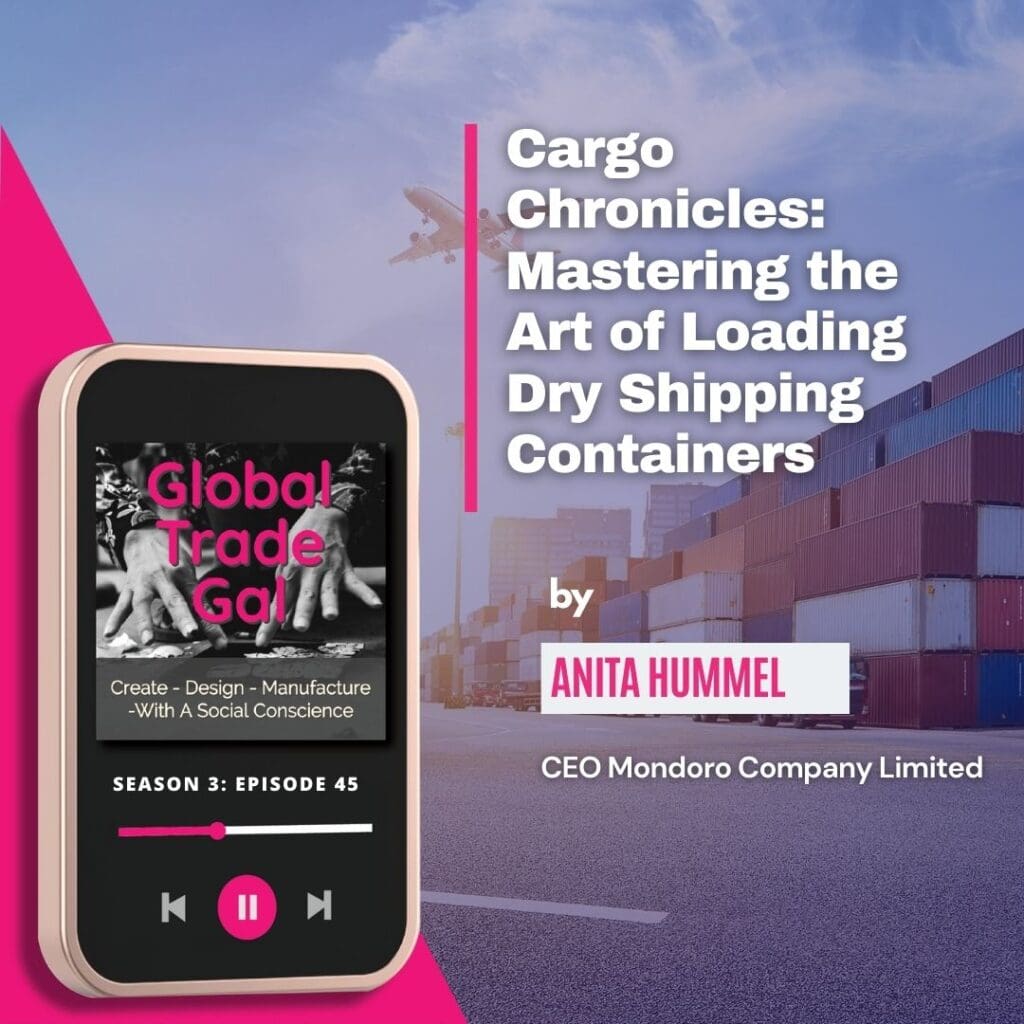
Find out more about how Mondoro can help you create, develop, and manufacture excellent home decor and furniture products – don’t hesitate to contact me, Anita. Check out my email by clicking here or become a part of our community and join our newsletter by clicking here.
Mondoro gives out a FREE Lookbook to anyone interested. You can receive a copy of our latest Lookbook by clicking here.
Listen to our Podcast called Global Trade Gal. You can find it on all major podcast platforms. Try out listening to one of our podcasts by clicking here.
Subscribe to our Mondoro Company Limited YouTube Channel with great videos and information by clicking here.
Related Questions
What Is The DUPRO or During Production Inspection?
The DUPRO Inspection is a product inspection conducted during the manufacturing phase of production. The DUPRO is also known as during the production inspection, as its primary purpose is to find any errors during the product’s manufacturing phase. Most manufacturing errors are more accessible to fix during production than when the goods are completed.
You can find out more about DUPRO by reading our blog DUPRO, During the Production Product Inspection Guide by clicking here.
How Do I Find an Overseas Manufacturer to Produce my Product Ideas?
For many people, the biggest hurdle they have in looking to import products from overseas is finding the right overseas supplier to produce their products. To find a reliable overseas manufacturer to create your product ideas, there are some basic steps you can take) Find a reliable trade agent to help you find manufacturers, 2) attend trade shows in your industry, 3) research online to find a supplier, 4) talk to a trade organization, and 5) try to get a referral from someone in your industry.
You can find out more about how to find a manufacturer to produce your products by reading our blog How Do I Find an Overseas Manufacturer to Produce my Product Ideas? by clicking here.

